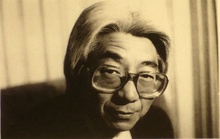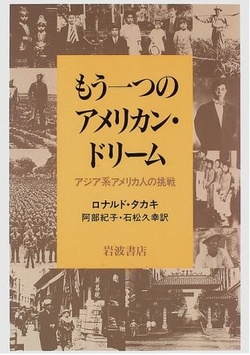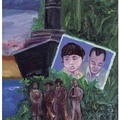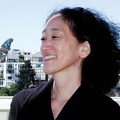At the end of May this year, I read the news that Professor Ronald Takaki, a third-generation Japanese-American, had committed suicide.

Ten years ago, on April 29, 1999, students from the Third World Liberation Front (twLF) went on a hunger strike on campus at the University of California, Berkeley, where Takaki was working, and six of them were arrested five days later. In the 1990s, the university saw cuts to the budget and faculty of the ethnic studies department, and the number of classes was reduced compared to before. This was the beginning of the incident.
Following the students' arrests, Takaki stood on campus and addressed the university president:
"If they are going to arrest students, they should arrest me too."
He continued.
"Nine other teachers must be arrested. Students should be negotiated, not arrested."
Needless to say, he was met with a standing ovation from the students, but it seems likely that he himself had taken on a great deal of resolve in attending the rally.
He was a man of such strong spirit. That's why the word "suicide" didn't really resonate with me. The media only reported that he had suffered from multiple sclerosis for the past 20 years. I don't know if that was the only reason for his suicide. The only thing that remains in my mind is the strong Takaki I saw in the documentary film.
There seems to be mixed opinions about twLF's methods, but I am impressed that student movements still have this power in this day and age, and that a university professor has spoken out on behalf of the students.
The work of Japanese American researchers is rarely translated into Japanese, but Takaki, who was an ethnologist, is an exception. Of the dozen or so publications he has written, five have been translated since the 1980s: "Pau Hana: A Social History of Hawaiian Immigrants," "Another American Dream: The Challenge of Asian Americans," "Why Did America Drop the Atomic Bomb on Japan?", "A History of Multicultural America: Reflected in Another Mirror," and "Double Victory: For Whom Was World War II a Fight?"
Portraying America as a Collection of Minorities
A consistent theme in Takaki's writings is his attempt to reexamine history from the perspective of a multicultural society. America is also attempting to rewrite its history from a multicultural and multiethnic perspective, not just from a European one.
Takaki was born in Honolulu in 1939, and after graduating from high school, he moved to the mainland and went to college in Ohio. It was a time when the civil rights movement for blacks was gaining momentum in American society, and he became aware of minority history. Unlike in Hawaii, he himself was a minority in Ohio, which likely had a major impact on his worldview. He later studied black history at the University of California, Berkeley, and wrote his doctoral dissertation in 1967 on the subject of the African slave trade.
Later, he became more interested in other minorities. In "Pau Hana," he portrayed the multicultural and multi-ethnic society of his hometown, Hawaii. In "Another American Dream," he highlighted the existence of Chinese, Japanese, Korean, and Filipino communities.
"The History of Multicultural America" can be said to be the culmination of Takaki's American studies, and it portrays America as a multicultural, multi-ethnic society focusing on blacks, Native Americans, Asians, Hispanics, as well as Jewish and Irish Americans.
The original version of "A History of Multicultural America" was written in 1993. Coincidentally, the Los Angeles riots that occurred the previous year exposed friction between Hispanics and blacks, and Koreans and blacks, to the mass media, and had a major impact on Takaki. In recent years, there has been an increase in research on American Jewish society, Eastern European society, black society, Japanese society, and other communities, but these studies fragment American society and study each group in isolation. This, Takaki says, does not meet the needs of the era after the Los Angeles riots. Here is a quote from Takaki:
"Do the television images that riveted us during the turbulent days of the Los Angeles riots represent a future of fractured race relations, or can America's diverse racial and ethnic populations come together to forge one larger narrative? Whatever happens, we can be sure that the future of our society will be profoundly influenced by the mirrors we choose to see ourselves in."
Takaki says that people can study the past and see themselves in the mirror of history, but what is needed in today's complex world is to see ourselves in "another mirror." Takaki seems to want to say that by looking at ourselves from the perspective of other peoples and cultures, we can deepen our understanding of ourselves and others.
Eight years after this book was published, on September 11, 2001, the New York terrorist attacks occurred, and the world changed forever. Arab Americans are not mentioned in "The History of Multicultural America," so how did Takaki view this incident?
The 9/11 attacks seem to have forced us to face the difficulty of seeing ourselves in a different light, and the difficulty of understanding other peoples and cultures.
*This article is a reprint of the third installment of the column series "From the Perspectives of Two Countries" in Renso Publishing 's online magazine "Kaze," which features information about new books, such as articles linking new books to current issues and daily topics, as well as monthly bestsellers and review columns on new books.
© 2009 Association Press and Tatsuya Sudo












